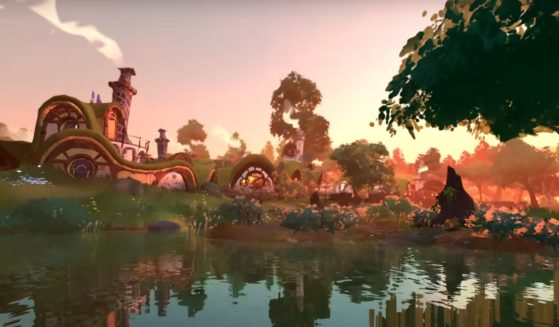Scientists Discover 81 Strange Mounds in Amazon, Then Realize What They're Looking At
When we consider ancient civilizations, names such as Athens, Rome, and Constantinople flood our minds. We think about towering edifices, crowded streets, and enduring artifacts.
But not every civilization has left behind such lasting archaeological evidence. Just consider what University of Exeter scientists Jonas Gregorio de Souza and José Iriarte discovered in the middle of the Amazon — and how they discovered it.
The archeologists didn’t use some exotic tool to survey 54,000 square kilometers of Amazonian jungle near the upper basin of Brazil’s Tapajós River. Rather they turned to Google Earth and Zoom Earth.
What they discovered put the lie to the thought that the Amazon is a virgin swathe of trees never touched by human hands. They saw 81 mounds on the satellite, each one its own village.
Our brilliant archaeologists Dr Jonas Gregorio de Souza and Professor José Iriarte have discovered new info about the history of people who called the Amazon their home #amazon #archaeology #newdiscovery
Read more on our news page: https://t.co/3ktaCQHhSS pic.twitter.com/KvFgVnuahI— Exeter Humanities (@UofEHumanities) March 28, 2018
One such settlement centered around 11 distinct hillocks, which de Souza believed were individual habitations. They appeared to enclose a central square, and a flattened mile-long road either led to the village itself or was part of a network of roads linking it to other settlements.
“There are historical accounts of large villages in the Tapajós headwaters, and we believe the sites we found may be the archaeological remnants of those,” de Souza said.
Indeed, some of the settlements the scientists discovered spanned an impressive 400 meters in diameter.
“Prominent scholars thought that little of cultural significance had ever happened in a tropical forest,” Dolores Piperno of the National Museum of Natural History told The Washington Post. “It was supposed to be too highly vegetated, too moist.
“And the corollary to those views was that people never cut down the forests. They were supposed to have been sort of ‘noble savages.’”
Iriarte and de Souza went on the ground for some two dozen of the sites, and what they found confirmed their hypothesis. They unearthed tools, ceramic shards, trash heaps, and remnants of an ancient fertilizer.
Dr Jonas Gregorio de Souza from @UofEArchaeology quoted in the @MetroUK today. Make sure to pick up a copy and learn all about the secret villages in the #Amazon? pic.twitter.com/539U4vtqeS
— University of Exeter News (@UniofExeterNews) March 28, 2018
Carbon dating puts some of the charcoal fragments they found at around the mid 15th century. Iriarte and de Souza estimate that upwards of one million people could’ve lived in the area.
What does that mean for us today? It shows that the Amazonian jungles are less of a pristine forest and more of an ecosystem man can cultivate without destroying it — at least if we’re careful.
“These people were combining small-scale agriculture with management of useful tree species,” de Souza said. “So it was more a sustainable kind of land use.”
Submit your story here, and subscribe to our best uplifting stories here.
Truth and Accuracy
We are committed to truth and accuracy in all of our journalism. Read our editorial standards.












